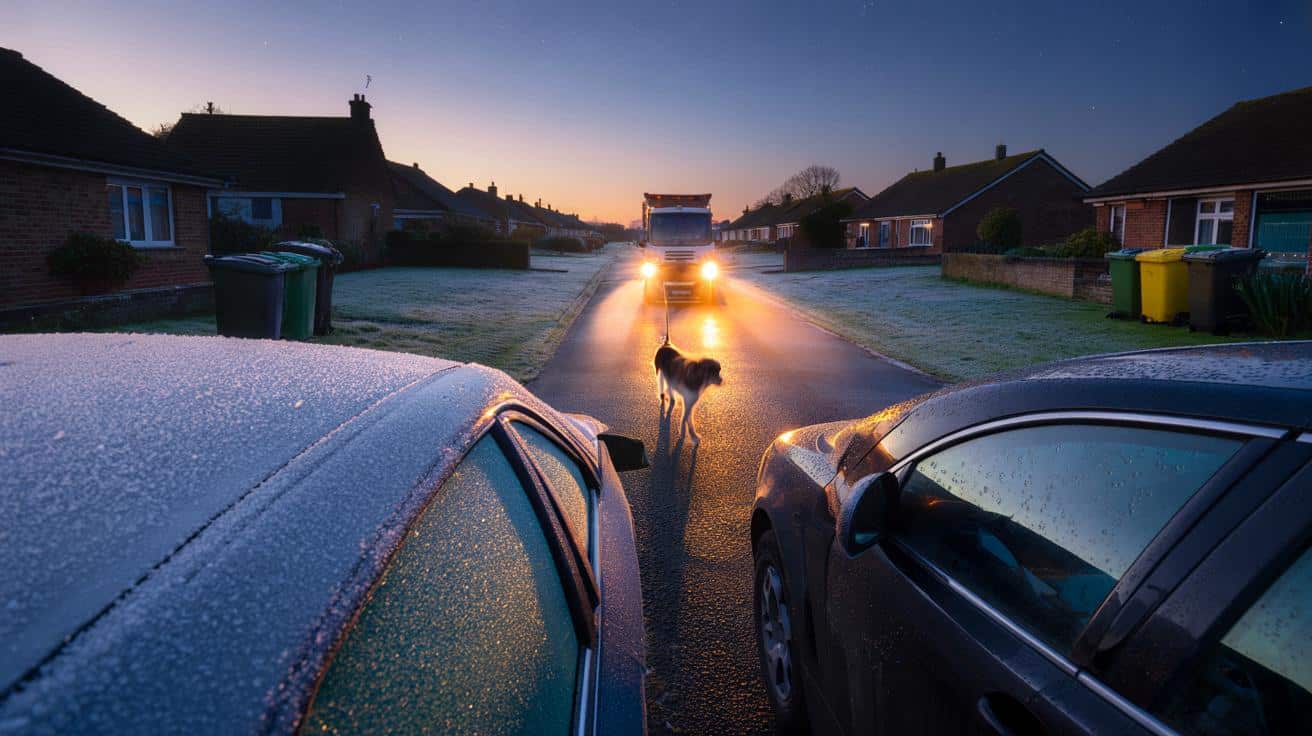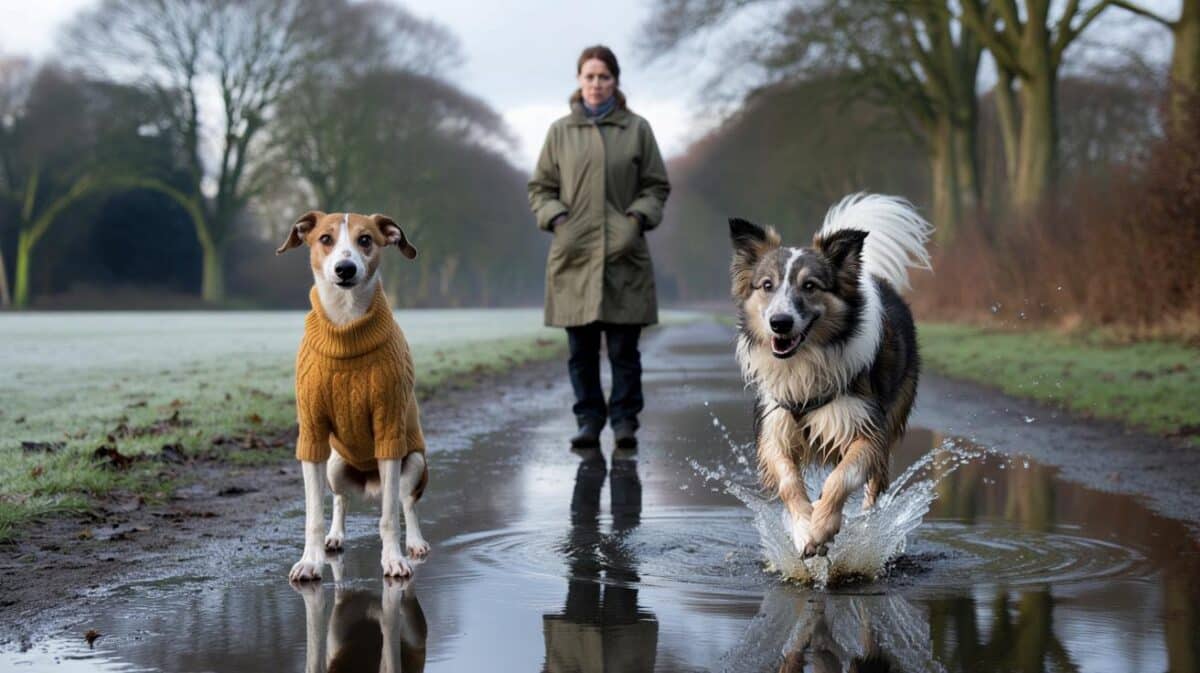The Met Office’s latest guidance points to a split picture across the UK, with localised frost likely in colder nooks, while many towns stay just the right side of zero. Here’s what that means for your street, your windscreen and your early-morning plans.
I saw it on a quiet cul‑de‑sac just before sunrise: one car glittering white, the next still wet and dark. A dog tugged its owner past the bin lorry, breath pale in the beam of the headlamps. Somewhere, a kettle clicked. The kind of morning that makes you sniff the air and pull your zip a notch higher.
Across the UK, that’s the line we’re walking now. The Met Office says frost risk hinges on where skies clear and winds drop, not on a single big plunge. One neighbour is scraping a windscreen, another is not.
The answer is in the sky.
Will frost bite the UK?
The short version from the Met Office: **widespread frost unlikely**, but **patchy frost in colder spots** is back on the cards. Think Highland glens first, then sheltered valleys of northern England and Wales, and rural pockets of the Midlands. Urban centres and coasts run milder by a degree or two, often just enough to dodge a proper freeze.
Under high pressure, clear nights let the day’s heat leak into space and the ground cools fast. That’s the classic set‑up. Throw in light winds and any cold air simply pools in hollows. If cloud creeps over by midnight, the lid goes on and the frost idea fades. One street glitters, another stays damp. It’s that local.
Want a concrete clue? Climatology says average “air frost” days vary wildly: 50–70 a year in parts of the Highlands, nearer 10–20 in the south-west and along the milder coasts. In November, first frosts are quite normal for northern inland spots, while the far south often waits until later in the month. That doesn’t mean every year behaves. It just sets the stage for what feels likely when the nights turn still.
Ground frost bites earlier than the air thermometer suggests. Your car roof and lawn can slip below freezing even if the screen says 2–3°C, because bare surfaces radiate heat into the clear night faster than the air does. That’s why the shed roof goes white while your porch feels fine. It’s less about a magic number, more about conditions lining up.
So will it “hit the UK”? Yes, in places that tick the boxes: clear sky, light wind, dry air, and a landscape that lets cold settle. No, not as a countrywide freeze with iced pavements from Belfast to Brighton. Moist Atlantic air returning overnight can shut the frost down quickly. *Frost is a local story dressed up as a national headline.*
Watch for tell‑tales after dusk: stars sharp as pins, a breeze that fades to nothing, and temperatures stepping down fast. If evening cloud hangs on, your morning odds fall. If it clears late, you’ll meet a two‑street forecast, where the top of the hill ices and the bottom doesn’t.
Small moves for frosty mornings
Think evening, not just morning. Park the car facing east if you can, so the first light hits the windscreen. Pop a towel or proper screen cover over the glass; it’s the simplest barrier to radiational cooling. Bring vulnerable pots against a wall, and lift terracotta off the ground with feet. If you’re up late, a quick wipe of the screen to remove dew can stall the first glaze of ice.
Grit paths before bed rather than at 6am. It’s calmer work and uses less salt. For pipes in outhouses, a cheap bit of foam lagging goes a long way. Gardeners swear by fleece for tender herbs and late blooms, but one layer is plenty on a marginal night. Let’s be honest: nobody really does that every day. Do it when the sky is clear and your breath looks like chalk.
We’ve all had that moment when the door clicks shut, keys inside, and a frozen lock stares back at you. That’s the winter equivalent of leaving the oven on.
“Clear and still? The fridge door is open. The cold will sink and sit where the air is quiet.”
- Set a two‑minute “evening frost check” reminder on your phone.
- Keep de‑icer and a soft scraper by the front door, not in the glove box.
- Lift wipers off the glass to stop them welding to the screen.
- Cover outside taps; a tea towel and an elastic band beats a burst pipe.
Why this snap matters beyond the forecast
Cold snaps like this are small lessons in how British weather really works: hyper‑local, shaped by hills, hedges and the odd strip of cloud drifting in from the west. The Met Office map paints the broad brush, but the texture is on your street. One winter may bring fewer frost days than your childhood memories, yet one clear, still night can deliver the crunch underfoot you’ve been waiting for. That tension makes communities swap tips, check on neighbours and compare windscreens like cricket scores. It’s how weather becomes a shared ritual rather than a chart on a screen.
| Point clé | Détail | Intérêt pour le lecteur |
|---|---|---|
| Frost risk is local | Clear skies + light winds + dry air = highest chance | Know why your street ices while the next doesn’t |
| Not a nationwide freeze | Coasts and cities often stay just above zero | Reduce anxiety, plan smarter commutes |
| Evening prep matters | Cover screens, pre‑grit, move pots, lag taps | Save time at dawn and avoid costly damage |
FAQ :
- Where is frost most likely tonight?Inland and rural spots of Scotland, northern England, and higher Welsh valleys lead the way when skies clear. Urban centres and immediate coasts are less exposed.
- What’s the difference between ground frost and air frost?Ground frost means surfaces drop below 0°C even if the air at 1.25 m is above freezing. Air frost is when the standard screen‑height thermometer hits 0°C or lower.
- My car says 2°C. Can I still get ice?Yes. Radiative cooling can take your windscreen below freezing while the sensor reads a couple of degrees above. That’s why bridges and roofs white over first.
- When do councils grit the roads?Gritting typically starts when road surface models show a freezing risk, not just air temperature. Treated routes focus on main roads; side streets can still glaze.
- Best quick fix on a frosty morning?Start with a proper scraper and de‑icer. Warm the car gently from the cabin. Avoid kettles of hot water on glass; tiny cracks can become big problems fast.







